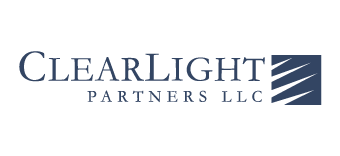This Too Shall Pass: A Message of Hope to Business Owners from Private Equity
Read time: 3-4 minutes
“Hope is the only thing stronger than fear.” (Robert Ludlum)
Introduction
To date, Coronavirus has claimed over 95,000 lives globally across 210 countries, the Dow Jones has lost approximately 20% of its value from a peak in February1, businesses across all sectors have been forced to furlough and/or lay off employees and, in some cases, close, and most states have ordered residents to remain at home to slow the rate of infection. And, these are not just lifeless facts and statistics – everyone’s lives have been personally upended to some degree by the current outbreak including many with connectivity to a loved one that has been infected. That’s the bad news. However, this article is not intended to further contribute to the daily assault on our collective consciousness by ever worsening news headlines. To the contrary, this message is one of inspiration to business owners from investors that have persevered through adversity over a 20-year period since our firm’s founding. We are here to say that the lasting consequences of surviving a great trial include resilience, strength and depth of character. This too shall pass.

Prior U.S. Epidemics and the Results
One way to foster optimism is to better understand what those before you have overcome. As you might expect, the U.S. has encountered its fair share of disease over the past couple hundred years. In some cases, diseases occurred in waves and spanned decades. What may be comforting is observe the conclusion – in every case, medical and/or hygienic innovations resulted in the particular disease’s ultimate containment or outright end. This is not to diminish the tragedy of each outbreak, rather to simply illuminate where we currently are amidst the Coronavirus saga as compared to other instances of disease.
| Prior U.S. Epidemics | |||
|---|---|---|---|
|
Year |
Disease |
Geography |
Outcome |
| 1793 | Yellow Fever from the Caribbean | Philadelphia |
§ 5k people died, 17k fled the city § Vaccine developed |
| 1832-1866 | Cholera (3 Waves) | New York City |
§ 2-6 Americans died per day during the outbreak § Vaccine developed |
| 1858 | Scarlet Fever | New England |
§ 95% of the people who caught the virus were children § Improved hygienic standards ended the epidemic |
| 1906-1907 | “Typhoid Mary” | New York |
§ Over 10k people passed away annually § Vaccine developed |
| 1918 | “Spanish Flu” | U.S. |
§ Estimated 675k Americans died § Vaccine developed |
| 1921-1925 | Diphtheria | U.S. |
§ Over 15k people died § Vaccine developed |
| 1916-1955 | Polio | U.S. |
§ Over 3k people died from Polio during its peak in 1952 § Vaccine developed |
| 1981-1991 | Measles Outbreak | U.S. |
§ Annual death rate fluctuated between 2-10k people § Vaccine developed |
The closest historical parallel to what we’re currently experiencing is the influenza pandemic of 1918, often referred to as the “Spanish Flu”2. In total, approximately one third of the world’s population caught the Spanish Flu which caused a severe respiratory tract infection. Estimates of the global death toll exceed 50 million with 675,000 casualties in the U.S. alone. The immediate economic consequences of the outbreak included the shutdown of major U.S. cities such as New York and Philadelphia as much of their population became bedridden. As we’re experiencing now, businesses were closed, sporting events were cancelled, and private gatherings were prohibited to flatten the curve of transmission. Additional economic consequences included labor shortages, wage increases, deterioration in GDP, and increased strain on the social security system as a safety net. The losses were substantial and not at all to be taken lightly, but we pulled through. What’s amazing is that despite the Spanish Flu’s ferocity many in the present era had not even heard of it until it became an oft cited analogue to Coronavirus. It seems we can always count on the passing of time to bring healing.
Prior U.S. Recessions & Economic Crises
The Coronavirus-driven disruption to economic activity in the U.S. and abroad is now expected to result in negative GDP growth for 2020 in the low- to mid-single digits. This is on the heels of the longest period of economic expansion in our country’s history, the era following the Great Recession. At nearly 11 years of GDP growth, many of us find it hard to remember what a recession even feels like, but we’re going to be powerfully reminded. However, as was the case with prior downturns, we’re going to get through this. The following chart highlights 12 recessions in the U.S. since the Great Depression. Note that none of them exceeded 1.5 years in length and a couple posted declines well in excess of what we’re expecting for 2020. That’s something about which we can be optimistic if history is any predictor of future events.
| Prior U.S. Recessions Since the Great Depression | |||
|---|---|---|---|
| Name | Period Range | Duration | GDP Decline (Peak to Trough) |
| Great Depression | August 1929 – March 1933 | 3 years, 7 months | -26.7% |
| Recession of 1937-1938 | May 1937 – June 1938 | 1 year, 1 month | -18.2% |
| Recession of 1945 | February 1945 – October 1945 | 8 months | -12.7% |
| Recession of 1949 | November 1948 – October 1949 | 11 months | -1.7% |
| Recession of 1953 | July 1953 – May 1954 | 10 months | -2.6% |
| Recession of 1958 | August 1957 – April 1958 | 8 months | -3.7% |
| Recession of 1960-1961 | April 1960 – February 1961 | 10 months | -1.6% |
| Recession of 1969 – 1970 | December 1969 – November 1970 | 11 months | -0.6% |
| Recession of 1973 – 1975 | November 1973 – March 1975 | 1 year, 4 months | -3.2% |
| Recession of 1980 | January 1980 – July 1980 | 6 months | -2.2% |
| Recession of 1981 – 1982 | July 1981 – November 1982 | 1 year, 4 months | -2.7% |
| Early 1990’s Recession | July 1990 – March 1991 | 8 months | -0.3% |
| Great Recession | December 2007 – June 2009 | 1 year, 6 months | -5.1% |
Source: Wikipedia
We’re Living This Alongside You, and We’re Optimistic
As current majority investors in eight U.S. businesses operating in diverse sectors across the economy, we are living these challenges in real time alongside you. Coronavirus’ effects to our portfolio companies range from slightly positive to materially negative. Challenges across the portfolio have involved managing liquidity, compliance with bank covenants, revenue declines, supply chain disruption, staffing discontinuity and some extremely hard decisions around cost reductions. However, the current pain we are feeling will subside, and business will resume as normal before long. One way to view the glass as half full is to remember the sentiment shared by Winston Churchill when he said, “Never waste a good crisis.” In other words, while times are hard right now, the key is to look for ways to emerge stronger and to grasp new business opportunities in the post-Coronavirus era.

In the Meantime, We Can Help You Solve Problems
If you are a business owner and are going through tough times right now, we would encourage you to reach out to us to share your story. It’s likely that we have dealt with or are currently wrestling with similar challenges based on having invested in over 20 companies since our inception. Please use us as a resource if you are looking for anyone to talk to about ways you might address any current business hardships. Common areas where we see business owners presently needing help include:
| Common Coronavirus-Related Business Challenges | |
|---|---|
|
Issue |
Commentary |
|
1. Managing |
Insofar as cash is king, this is a critical area to which businesses need to be attuned. Many companies have chosen to draw on their revolving lines of credit to make sure they have sufficient cash on hand to weather the next several months. There are other tactics that can be employed to preserve cash reserves until the Coronavirus runs its course that we’d be happy to discuss. |
|
2. Compliance with Bank Covenants |
Many businesses that were previously comfortably compliant with bank covenants are now having some difficult conversations with their lenders. Having lived through the Great Recession, we are familiar with the nature of these discussions and can help you navigate those conversations to minimize the disruption to your business. A proactive and transparent communication strategy with your lenders will allow you to spend more time focusing on restoring stability in the business. |
|
3. Staffing |
Some businesses, such as those that continue to operate in more consumer facing arenas are experiencing a challenging labor environment due to a workforce that has either contracted Coronavirus or is fearful of doing so and have decided to not work. This can be a challenging issue to solve for. The same goes for managing a workforce that has historically come into the office and is now working remotely. These are issues with which we are currently contending and would be happy to share our perspectives. |
|
4. Revenue Declines |
Most sectors are experiencing material revenue declines in the current environment. While not permanent, it can be painful in the short-term, so it’s important to determine if there are quick pivots that can be made to generate incremental revenue while your traditional lines of businesses are taking a hit. |
|
5. Supply Chain Disruption |
Whether your supply chain has been significantly disrupted or is simply moving more slowly, the movement of goods is essential to product- oriented businesses. We’re presently investors in several companies with complex supply chains that have been affected by Coronavirus and have had to respond accordingly. |
|
6. Cost Reduction |
Perhaps the hardest decisions to make are surrounding if, when and where to make cuts to make sure the business remains on stable financial footing. We’ve had to examine each of our portfolio companies through this lens and would be happy to share some reflections on best practices across the industries in which we are operating. |
Conclusion
We hope this review of prior U.S. epidemics and challenging economic periods has given you some hope as to the impermanent nature of what we’re currently experiencing. Rest assured that there will be good days ahead, and we will be able to share the war stories of surviving Coronavirus. Please know that we are genuinely here to help anyone wrestling with current business challenges and would be happy to lend our expertise or just a sympathetic ear. Please call us any time. In the meantime, please stay safe, healthy and optimistic.
_______
1Also, during Q1 2020, the Dow Jones posted its worst ever first quarter
2The Spanish Flu is referred to as such because it was first reported in Spanish newspapers
About ClearLight Partners
ClearLight is a private equity firm headquartered in Southern California that invests in established, profitable middle-market companies in a range of industry sectors. Investment candidates are typically generating between $4-15 million of EBITDA (or, Operating Profit) and are operating in industries with strong growth prospects. Since inception, ClearLight has raised $900 million in capital across three funds from a single limited partner. The ClearLight team has extensive operating and financial experience and a history of successfully partnering with owners and management teams to drive growth and create value. For more information, visit www.clearlightpartners.com.
Disclaimer: The views and opinions expressed in this blog are solely my own and do not necessarily reflect any ClearLight opinion, position, or policy.









